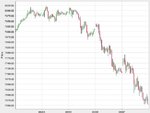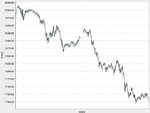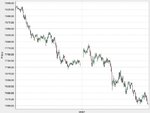Scale in on trend days, single entry and exit otherwise
Your testing is inconclusive. I am not aware of your methods, but would suggest that on trend days scaling out works better than on ranging days. In those cases, you should have bigger profit targets and tighter stops on a trend day, and there are many ways of defining what a trend day is. If you place a trade an hour or more after the open, you should know if there is a strong trend. On those days, be more ambitious with your targets, and perhaps leave a position on as one of your "free trades"
On ranging days, or before news, perhaps if you wish to exit some of your position you should exit it all. On these days, if you are exiting it will be because either your target was hit (which was placed at a sensible level before emotion was involved in the trade), or because you took a discretionary exit (in which case if you are sure enough to cover, you must be sure enough to pull it all).
I think it all depends on your tolerance for risk and the percentage of your trade you leave on. If you leave on a 1/4 of a position with a breakeven stop you are giving yourself a chance at profits with little risk. I would argue that leaving as much as half on in a non trend day either suggests greed, or a weak target setting system
Your target setting should be informed by backtesting. If you consistently find trades continue in your favour after your target is hit, then perhaps you should consider revising that method. If you leave half on and the trade continues to move if your favour, by definition you are leaving profits on the table. Of course we can't pick tops or bottoms exactly on a trade, but scaling out expects the remaining part of the trade to hit nearer the bottom than the, ipso facto "safe" exit. I'm not too sure that scaling out is such a good idea.
However, scaling in appeals. I think that if a trend day has been identified, adding on pullbacks can be a lucrative and low risk form of trading. Good pullback entries can have extremely tight stops. If the market pulls back to a S/R level (or even a moving average), you should be entering within a few points of the rejection of that level. If the market turns and goes through that level, that will be a clear signal to exit the entire position. If you add a half size, or in some circumstances double up, the risk will be quite low in comparison to the reward.
You do risk taking small profits on trades which move against you as soon as you scale in, and this is why I recommend doing this on trend days only. This method isn't suitable for me, so I voted with the majority. However, when I go back to £2pp and higher it will be quite rare for me to put the full position on at once. There are some trending days where adding on a pullback to S/R or adding when price respects a 100 minute moving average on the YM would have been rather profitable indeed, more so than keeping a smaller initial stake on all day.
Of course, adding to a trade changes the risk:reward. My own rules for adding to a trade state that:
- The position should be in good profit
- A rejection of a higher (lower) S/R or EMA should be clear and confirmed by volume, $tick, or chart pattern
- If treated as a new trade in its own right, adding to the position should have favourable risk:reward.
- A very tight stop (usually half of the original SL) should be in place, and this is a signal to exit the entire trade, not just the new stake
- When adding further, ensure that stops are at breakeven, or at a profitable level where possible
The best advantage of scaling out from my perspective (issues with premature exits, panic exits, not keeping a cool head in a trade) is not having to worry. A 2 lot trade moves 10 points in your favour - you can take half off and move the remaining stop to BE. You are guaranteed +10, and you can take extra risk on the other half of the position. No stress - if you are right and the trade keeps moving, you get +20 initially and the distance between scaling out and your full exit. If you are wrong, the second part is a scratch, or you get a little slippage. You are still in profit.
Conversely, I prefer the thought of scaling in. You risk 1 lot with a good stop with good risk:reward on a trade. If you are right, you can risk more while never assuming more risk (if you have a BE stop on the first half, and a stop of half your open profit on the second half, you still can't lose). The times you are wrong, you lose 1 lot on a tight SL. In some trend days, there are opportunities to add a lot about 3 times in a day when the market moves overall 100 points. Scaled in, you can keep your risk low while taking close to an average of 40 pips per lot on 4 lots.
In summary, scaling out is good for the nervous trader, but can diminish profit potential (in every way I think about it). If scaling out can improve your profit potential, work on your target setting. Scaling in can be risky on range days, but can improve profit on a trend day.
Any thoughts?
Firewalker, although your testing is inconclusive, if you were to split the examples into trend and non trend days (using an indicator of trend which gives a signal before the first trade is taken on each day obviously), does your research support my hypothesis?
Thanks again for such an interesting thread. I will find this discussion and the points raised useful when I have earned the right to trade bigger.



